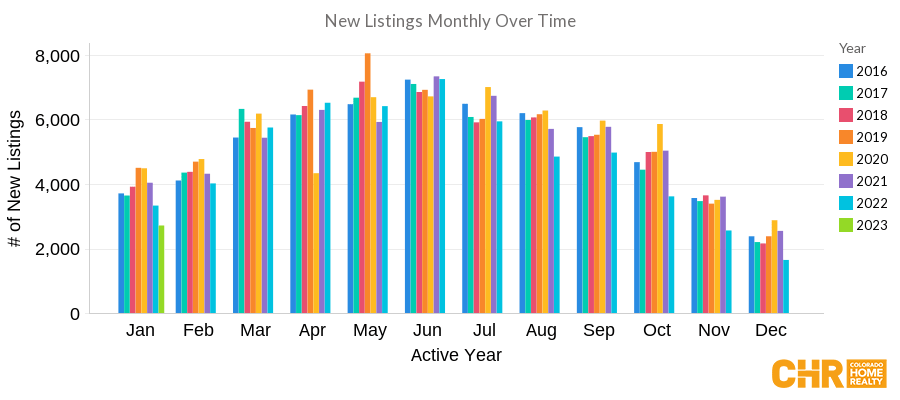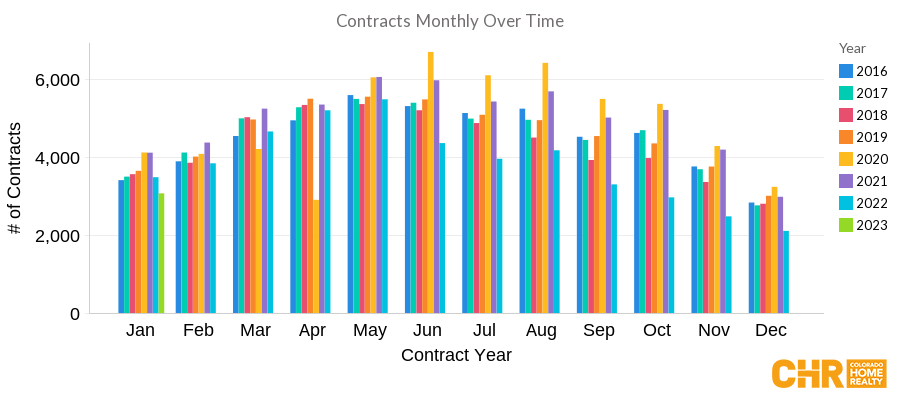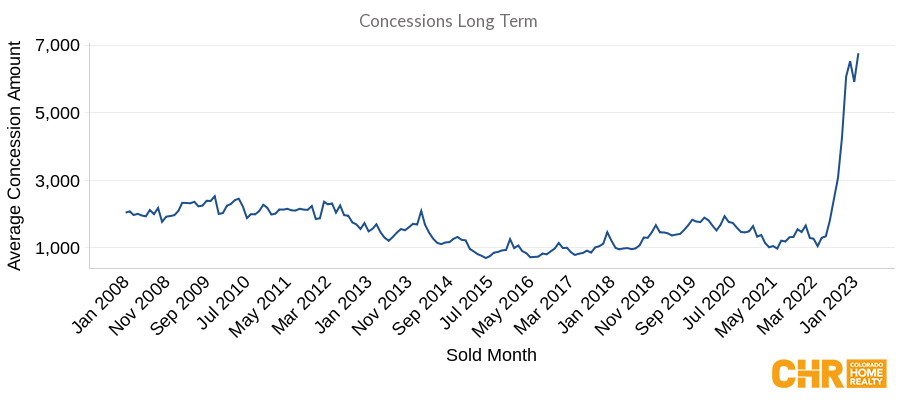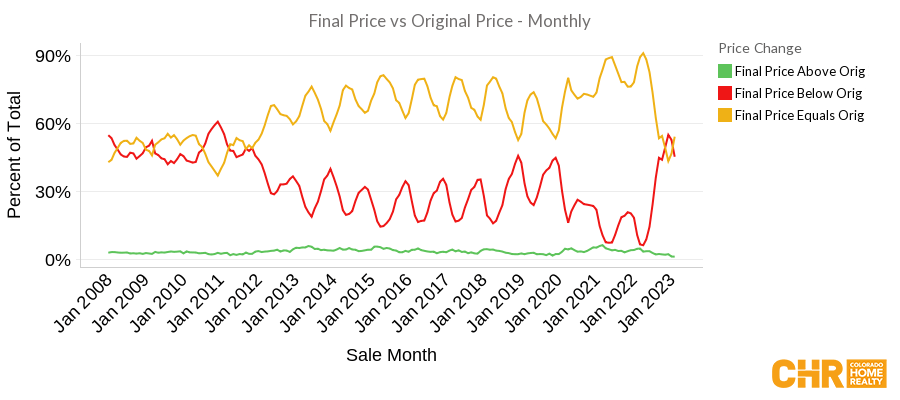A Busy Spring and Homeowner Appreciation Ahead
February 14, 2023 | Market Trends
February 14, 2023 | Market Trends
January real estate in Colorado played out as predicted, setting the stage for a busy spring and homeowner appreciation.
As expected, sellers are demonstrating hesitation entering the market. With lots of equity in their home and low interest rates on current mortgages, sellers are more content than ever to stay put.
Buyers are simply more motivated than sellers right now.
More properties have gone under contract each week for the last 12 weeks than new homes have hit the market. This has the potential to repeat the supply demand imbalance we’ve experienced acutely over the last 3 years with low inventory and strong buyer activity.
Now, buyer activity outpaces seller activity almost every January. While sellers are putting away their Christmas trees, buyers go shopping. Inventory of for sale homes almost always falls further in January (and many Februarys) of each year due to this imbalance.
But this year is extra-special.

Sellers are coming to the market at a historically slow pace. Only 2,716 homes hit the Denver market this January compared to an average of 3,800 homes over the last 15 years.
At the same time, the number of homes to go under contract in January was quite strong at 3,175 properties, driven by a modest decrease in interest rates that fueled buyer motivation.

Now to be clear, buyer activity isn’t setting records.
And the numbers show that sellers have been reducing prices, negotiating sales prices, and offering buyer incentives and concessions on things like rate buy-downs, closing costs and inspection items.
But, these statistics are mostly a hangover from winter of 2022.
“Lag Indicators” are a statistical reference to things we measure in the rearview mirror. Meaning, we look back and measure what happened 30 days ago, 60 days ago or a year ago. They are valuable measurements, but they are not predictive of future events in and of themselves.
The below are all lag measures of the Denver real estate market. They tell a story, but they tell a story from 2022, not where we are headed in 2023. The key is to understand how the market misinterprets this historical information and use it to your advantage.
Buyers will be able to negotiate because of unaware agents and uneducated sellers.
Sellers will be able to price homes more aggressively than what much of the market believes because we already know inventory is dropping, rates are coming down and buyers are having to get more aggressive with their offers.
67.9% of homes sold below asking price as of the end of January, 2023.

Many agents will use the high ratio of homes selling for less than the asking price as a way to convince a seller to price their home lower. In a market where homes are losing value, that’s wise. We saw the unfortunate impact of that lacking wisdom in 2008 through 2011. Many people lost their homes because agents couldn’t see these trends and help homeowners price accordingly.
That’s not the market we are in. We are in an appreciating market with more buyers than sellers at the moment. In an appreciating market, like today, pricing lower is the wrong advice as you leave value equity on the table.
We will see the ratio of homes selling for less than the asking price to come down markedly over the next couple months. As a seller, know that we are in an appreciating market and plan to partner with your real estate professional to get aggressive with price, relative to the condition of your home. We’ll tell you if and when that shifts.
Remember there is always a balance of price, condition and time. If your home is in great shape and you are patient, you can price higher in an appreciating market.
Sellers have been contributing to closing costs, rate buy-downs and more significant inspection items, since mid summer of last year more so than ever on record. Since September of 2022, seller concessions have skyrocketed to 4 times the 15-year average of $1,500 per contract.

The month of January ended with the average seller concession per contract at $5,908 and February is starting high at $6,320.
As a buyer, know that sellers and their unaware agent will continue to believe this trend continues. You have a brief period of time to still negotiate things like rate buy-downs, closing costs and inspection items, but this spring will get harder. We are already seeing the signs of multiple offers on properties and those numbers will start showing up in late February.
Sellers, don’t be fooled. If your home is well prepared, you are in a strong negotiating position with these market conditions. We don’t need to concede much as we move into the spring market.
As of the end of January, 47.2% of sellers are experiencing a price reduction. This is down from a high in December of almost 55% and up from April 2022 all-time low of 6%.

Pricing a home is an art. Pricing is a delicate balance of assessing the property condition, relative to the historical and active marketplace to determine a range of value and then partnering with the seller to decide where within that range of value best helps the seller meet their goals.
There are a lot of terrible “artists” in the real estate industry who have no idea how to price a home.
Over the last 3 years an agent could be incompetent at their job and still not be perceived as screwing up pricing because almost every home went for over the asking price. But those days are over. Price reductions will continue.
But we aren’t afraid of price reductions. Price reductions can be a healthy part of a “go to market strategy” if done with eyes wide open and great partnership between seller and agent.
When a seller is trying to maximize the value of a home (and there are very few conditions where that shouldn’t be the case), agent and seller place the home on the market knowing the market may give feedback that the home is overpriced. If the market is appreciating and the seller can be patient, the value of the home may catch up to the price and the seller should hold firm on their list price. But if they decide to reduce, as long as this was an agreed upon potential outcome at the beginning of the relationship with the agent, price reduction is just a strategy to be deployed, not an emotional event.
Right now, according to the National Association of Realtors, 87% of agents are not speaking to their sellers for more than 30 days, because they aren’t getting showings, aren’t receiving offers and have no idea what to tell their sellers.
That’s just not how professionals work and many agents will be getting out of the business as consumers begin to demand what they deserve; an advocate, a consultant, a professional who knows how to navigate these market conditions.
Share this Post